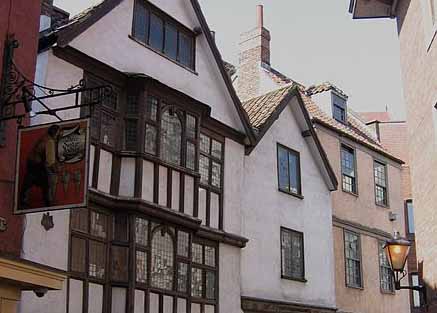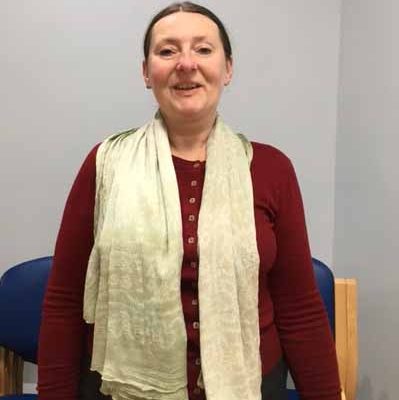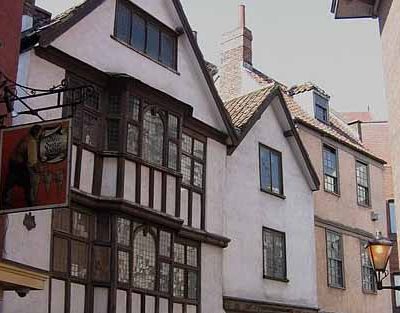

Irina’s expertise is on disability and she is a cultural historian. She began her talk by telling us that not every person died in the Medieval period after seeing a doctor. Her first slide was a manuscript of a physican inspecting a jar or urine. She told us this was not so unusual today as even her mother had used this method. She asked the question: who is interested in Medieval medicine? Histories are usually written by retired GPs; academics are interested in ideas; archaeologists are interested in human remains.
In the Medieval period religious healing can be seen in shrines. There was much superstition, for example, the King’s touch could heal scrofula. Saints and miracles were invoked and magical healing involved astrology, talismans, charms and incantations. Village healers were regarded as witch-doctors. Medieval medicine was based on ‘humoral theory’ – this involves inspecting blood, black bile, phlegm and yellow bile. Medieval texts referring to the body start at the head work works its way down to the feet. Modern charts (flow charts) also start at the head and work down.
Hospitals were the great achievement of the Medieval period (for civilians) by the 8th Century in western Europe. In Northern Italy they had public health and were the driving force for licensed physicians. This included waste removal, hygiene measures and clean water.
There is little documentation for medicine in the Medieval period: orphans, the elderly and those widowed were classed as disabled. Robert the Leech was the first physician in Bristol in 1235-48. John Free is the most famous (1460-65). He was born in Bristol but went to Padua in 1461.
Most hospitals were run by religious orders. They had no surgeon within, but a physician would be called in. One of the hospitals founded in Bristol was St. Bartholomew’s in 1231-4 for blind and lame people. It was ‘care’ rather ‘cure’. Hygiene included washing sheets twice a week, or even once a day. This was good for lepers with skin disease. Linen was used as it is softer on the skin than wool.
Bristol was a pilgrim city and organised pilgrimages to Santiago Compostela and it was the merchants who took them.
As far as Bristol’s public health was concerned, it had a good water supply through St. John’s conduit (1376), and the city was at the forefront of understanding that clean water was related to good health. The city employed a plumber, Hugh White, who was given a £10 life annuity.
Archaeologically, it is difficult to see evidence of mental health, apart from literature references. At Bristol Castle in 1309, Thomas Corderye wandered about and caused a nuisance. He was incarcerated in Bristol Castle, but released later. He had sporadic incarcerations. The borough custom laws of Bristol in 1344, told that mentally disabled people had to have guardians.
The talk ended with summing up why a knowledge of medical history was important: it allows wider insights into social, economic and cultural history.
This was a most enlightening talk on a little known subject.

St. Bartholomew’s Hospital, Christmas
Steps, Bristol. (Copyright William Avery)
